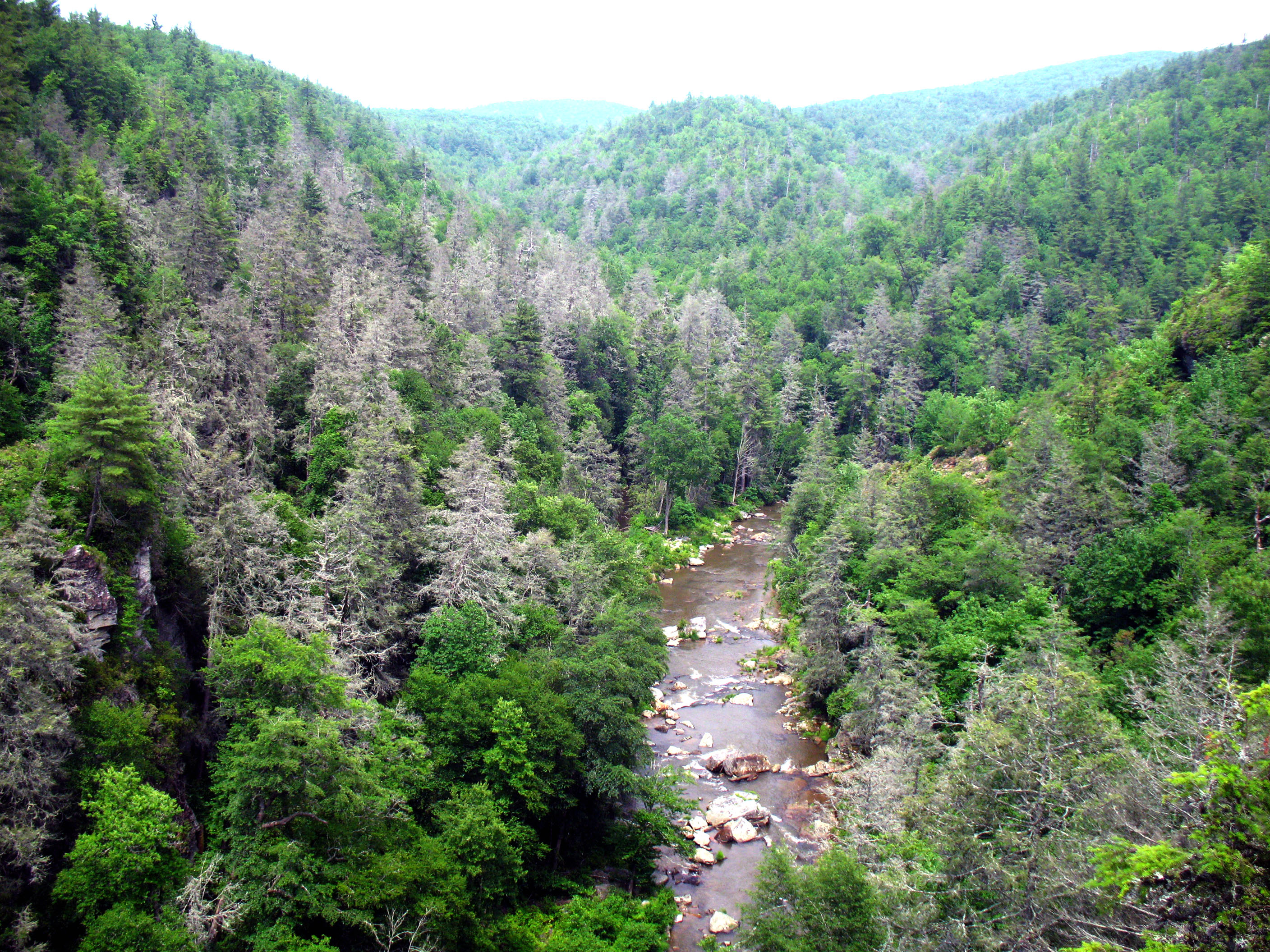Threats to our forests are threats to us
Sunday, June 8, 2014
Our Southern forests are not what they used to be.
Ask the U.S. Forest Service, which is using satellite imagery to track what they call the "gray ghosts" of our once majestic and deep-evergreen eastern and Canadian hemlocks as they are dying by the thousands across the southern Appalachians.
The research shows that hemlock woolly adelgids, nonnative pests from Japan, thrive in the warm South. Here, the hemlock woolly adelgid is killing trees much more quickly than in the northeast where it was discovered as an invasive transplant some years ago. In our climate, the invader can kill a tree in as few as four years.
Unfortunately, the hemlock is just one of many victims in our forests, according to a new forest threats report from the University of Tennessee and the Nature Conservancy: "Fading Forests III: What Choice Will We Make?"
The news is grim. In just the last dozen years, 28 new tree-killing nonnative pest species have been detected. Existing government programs have failed to halt introductions or respond effectively. And spending to control and prevent invasive species lags far behind the growth of infestations and the value of the trees at risk.
Our tallest, biggest, oldest trees, the ones that support our lives and livelihoods by providing clear water, jobs and wildlife, are at risk from nonnative insects and diseases that are killing the trees. Already we have lost one entire tree species, the American chestnut. And now hemlocks, oaks, ash and walnuts are in the path of decimation from accidental introductions of bugs and diseases.
These are tangible losses. Southern Appalachian streams once shaded by giant Canadian and eastern hemlocks now grow too warm for mountain trout beneath massive needleless scags. Visitors to gorges in our national and state parks now see weeds where once groves of hemlocks stood.
There also are financial costs. Nonnative thousand cankers disease, caused by a lethal fungus transmitted by a small twig beetle that hitchhiked east from the American Southwest, threatens $539 billion worth of black walnut trees.
The emerald ash borer, an invader from Asia, is eating away ash trees behind the bark. The wood of ash trees is critical for American traditions, from baseball bats to Native American basket weaving. In 12 years, the bug has spread from three to 21 states.
Municipalities spend more than $2 billion annually to remove trees killed by nonnative pests, and homeowners spend $1 billion a year removing trees killed by nonnative pests. Homeowners lose another $1.5 billion in lowered property values due to tree mortality, according to a study commissioned by the Nature Conservancy.
These problems are not somewhere out in the future. They are here, now.
Most eastern Tennessee counties, including ours, are either in quarantine or are considered buffer quarantine counties for thousand cankers disease. People in quarantined counties cannot move walnut tree products and hardwood firewood outside those counties. People in buffer counties can move walnut tree products and hardwood firewood within buffer counties, but not outside. Tree products can also be moved into a quarantine county, but not taken back out.
Then there are ash trees, marked with small, D-shaped holes barely larger than the head of a pin where the larvae of the emerald ash borer has crawled out. In Tennessee, 21 counties - including Hamilton County and most of East Tennessee - are quarantined for emerald ash borers.
Hamilton County has seven alien forest pests: butternut canker, chestnut blight, chestnut gall wasp, dogwood anthracnose, emerald ash borer, hemlock woolly adelgid and Japanese beetle. Neighboring counties in North Georgia and Northeast Alabama are under attack by some of these pests as well.
Scott Schlarbaum, professor and director of the University of Tennessee's Tree Improvement Program and co-author of Fading Forests, recently told the Knoxville News Sentinel that most of these pest introductions are directly related to our trade with China and other countries. Meanwhile the funding for government help like inspection and regulation has fallen.
USDA's Animal and Plant Health Inspection Service is yet to finalize several regulations to minimize pests traveling on wood packaging from Canada, imports of living plants, and interstate movement of firewood. The inspection agency first stated four years ago it would install these regulations.
The Forest Service and National Park Service know the problems but have not adopted nationwide recommendations and regulations restricting campers from bringing in firewood to picnic areas and campgrounds. In the absence of that help, nature groups have begun an education campaign for campers and picnickers that has become known as "Don't move wood."
Schlarbaum says the future forests of the South - now diverse and dominated by oak, hickory, pine and hemlock - will soon likely be dominated by yellow poplar and hickory.
"It's going to be a different forest from what we're used to," Schlarbaum said.

